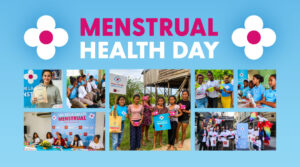Sexual activity with a stable partner can provide pleasure, a greater degree of intimacy and even strengthen the commitment that one person feels with the other. However, sometimes we have very fanciful ideas about how these encounters should be, and it is not very often that protection of sexual health appears in the middle of the fantasy.
Don’t forget that taking care of each other is a fundamental part of a relationship, so it shouldn’t be so difficult to open the conversation about how to take care of sexually transmitted infections (STIs) or an unplanned pregnancy.
That romantic notion that sex should be spontaneous and surprising can wait. It’s important that if you haven’t started sexual activity with your partner yet (or even if you already have), find a time to talk to him or her about safer sex.
What is safer sex?
If you do some research on the subject, you will find that there is some debate about when sex is really safe. Some people say that the only safe sex is not having sex, because by not having sexual activity there is no risk of contracting an STI, for example.
It is difficult to refute this fact, so it has been decided to call safer sex the measures that you can take before and during sexual intercourse, in order to prevent infection or pregnancy.
Thus, we could divide safer sex into two types: the one that uses protection tools and the one that consists of practices that have a low risk of unwanted consequences.
- Protection tools are the barriers that prevent both the exchange of sexual fluids and the contact between your mouth and the genitals or anal region of your partner. The first are the external (or male) condom and the internal (or female) condom. The second type are oral latex barriers, which are placed covering the area (genital or anal) where you are going to orally stimulate your partner.
- Low-risk practices for infections are those where there is no possibility of sexual fluids coming into contact. Among them are kisses, caresses on or under clothing, mutual masturbation, and so on. Of course, you should always wash your hands after touching your partner’s genitals and before touching yours.
Starting the conversation
If you don’t know where to start talking to your partner about having safer sex, the National Coalition for Sexual Health in the United States proposes five arguments with which you can take the first step to address the issue.
- “If we had a carefree sex life it would be great for both of us. Let’s talk about safer sex”
- “Safer sex is something that makes a lot of sense to me. Can we talk about that?”
- “Sex is more relaxing and fun when we are not worried about STIs or an unwanted pregnancy”
- “Using a condom can be a common practice for people who care about each other”
- “You can’t tell just by looking at it. Either one of you could have an STI without even knowing it.”
The recommendation is to talk about this before starting sexual life as a couple because this way you can start that stage free of worries and with established agreements in a calm environment, and not in the midst of the rush of the moment.
It could also happen that you have already had sexual encounters with your partner, and that he or she tells you not to worry, that the times they have done it, nothing has happened. Try to be firm in your goal; you can tell your partner that it is very important for you that, in future sexual relations, both of you are well relaxed knowing that you are actively taking care of each other’s health.
At AHF Latin America and the Caribbean we offer you services to protect you from STIs, especially HIV. If you want to obtain information, free condoms or free HIV tests, locate our offices in your country or write to us on Whatsapp and make an appointment now.







